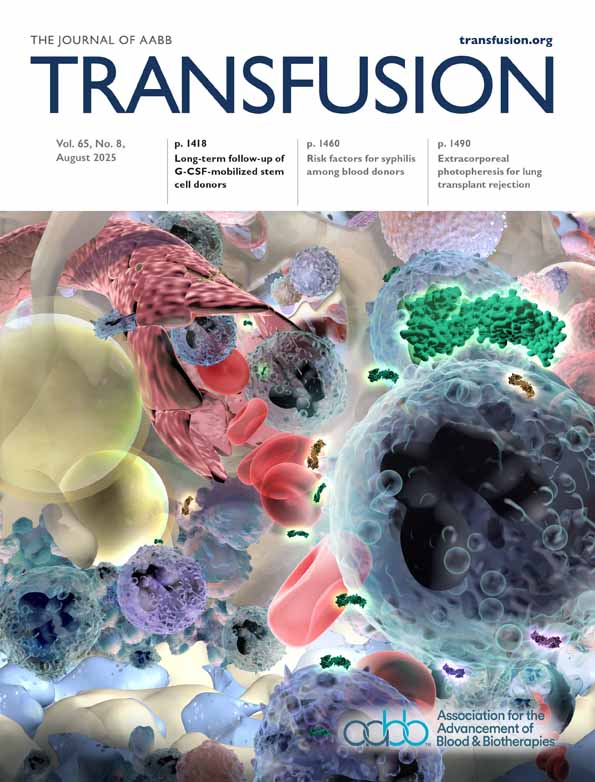Retroviral transduction and expansion of peripheral blood lymphocytes for the treatment of mucopolysaccharidosis type II, Hunter's syndrome
Abstract
BACKGROUND: Gene therapy using autologous peripheral blood lymphocytes (PBLs) has been used to produce adenosine deaminase with which to treat patients with severe combined immunodeficiency. Patients with mucopolysaccharidosis type II (MPS II) lack iduronate-2-sulfatase (IDS), and serial PBL gene therapy may benefit these patients.
STUDY DESIGN AND METHODS: The purpose of these studies was to develop a method to transduce PBLs from a patient with MPS II by using a retroviral vector, LS2N, containing the IDS gene. PBLs were collected by apheresis and cryopreserved in aliquots for the performance of multiple transductions and expansions. The PBLs were expanded in number and then transduced in a hollow-fiber bioreactor (HFBR). Additional culture allowed for further expansion.
RESULTS: Fresh PBLs (6.2 × 107) from a patient with MPS II were transduced with L2SN and expanded in an HFBR with an extracapillary space of 11 mL. After 10 days of culture, 4.1 × 109 cells were harvested. Cryopreserved MPS II PBLs could not be reliably expanded if they were placed in the HFBR immediately after being thawed; however, cells were successfully transduced and expanded in the HFBR if they were first cultured in a bag. To increase the cell yield, PBLs were expanded in a 60-mL HFBR after transduction and expansion in an 11-mL HFBR. In four separate experiments, 2 × 108 cryopreserved PBL were cultured for 3 days in a bag and transferred to an 11-mL HFBR, where they were transduced daily with L2SN for 3 days and then expanded for 4 additional days. Cells were then transferred into a 60-mL HFBR and expanded for an additional 7 days. In the four experiments, 5.5 × 109, 7.4 × 109, 1.12 × 109, and 19.4 × 109 cells were produced. The vector was detected in the harvested cells, but the proportion of cells transduced was less than 2.5 percent, the lowest standard used in the assay. In two of the experiments, cells harvested from the HFBR were used in a gene therapy clinical trial.
CONCLUSION: Autologous cryopreserved PBLs can be transduced and expanded to produce >1 × 1010 cells. This procedure is being used for a Phase I/II clinical trial of lymphocyte gene therapy.




